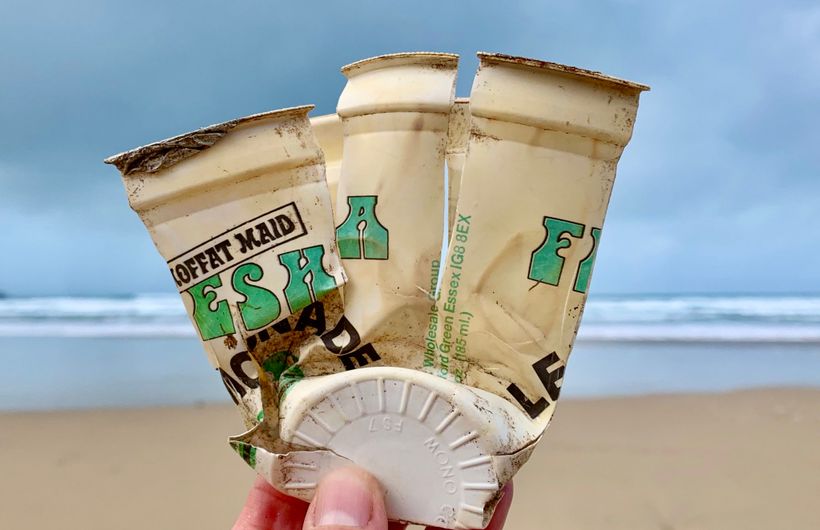How Long Does Plastic Last?
At Non Plastic Beach we often get asked why plastic is such a problem. The recent storms in the UK have given us an insight into just how long plastic can last, with single-use items from the 1950s and 1960s washing up on UK beaches.
‘Big weather’ events create waves that shift sandbanks and wind that erodes sand dunes. These then release plastic that has been covered for many years and incredibly well preserved. This might be historically interesting, but it also gives us an insight into the harm that plastic is doing – and will continue to do – to our oceans.
Documenting and researching the origins of our plastic past is the Twitter and Instagram account, @LegoLostatSea. The account was originally dedicated to the 1997 spill of 5 million pieces of LEGO from a container lost off a ship near Cornwall. To this day, LEGO daisies, cutlasses, seasgrass, inflatable boats and dragons wash up on beaches around the South West.
Today, the account has over 10,000 followers on Twitter and works hard to identify particularly old, interesting or persistently found pieces of plastic. Through this work we can get an insight into just how resilient plastic can be to environmental factors, with pieces that are almost 70 years old washing up after being released from dunes or sandbanks.
Cereal Giveaway Plastic Toys 60 Years On
Among solid plastic items they have found are a football spinning top given away with Kellogg’s Cornflakes in 1958, a Doby Washing up Bottle from the 1950s, a Tallon Jet car model from 1962 and a figure from Sugar Puffs in 1957.
Snack Food - a Moment on the Lips, Half a Century Under Ships
Perhaps it isn’t surprising that a solid lump of plastic can last a long time in the sea or sand, but even lightweight, single-use plastics like pots, bottles and even crisp bags can be found decades later. Pictured is a 1970 Moffat Maid Lemonade pot, on a beach 50 years after it was consumed!














